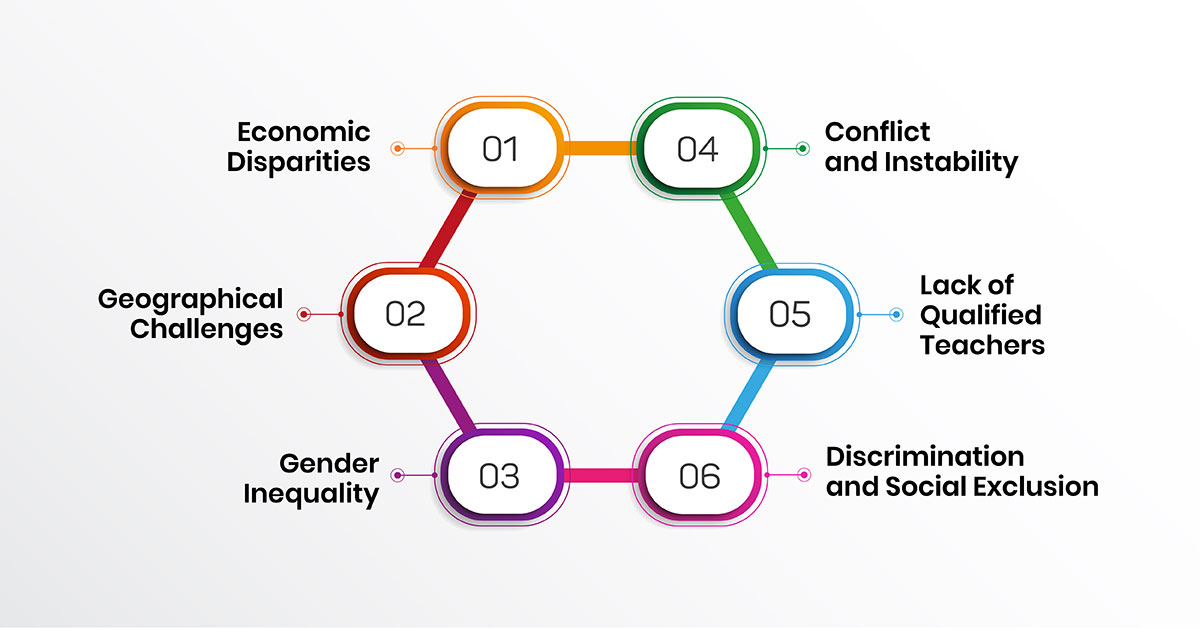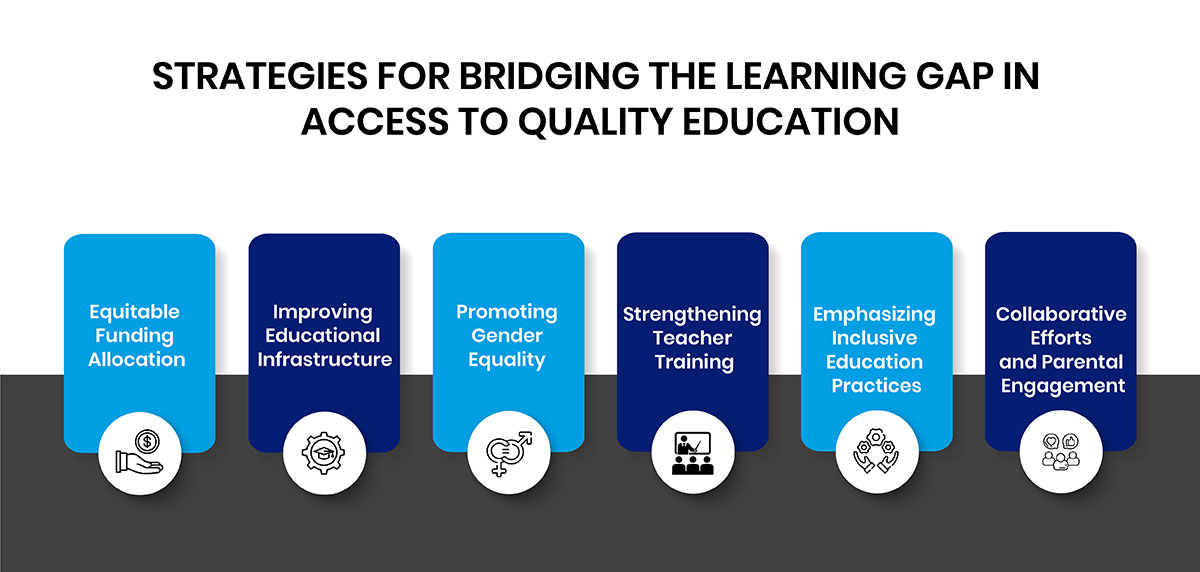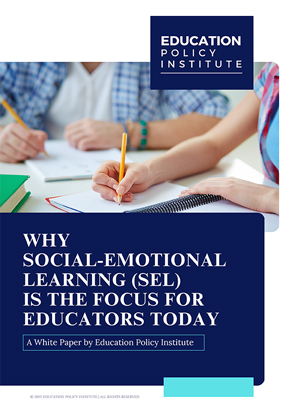Education is fundamental to human rights and essential for societal advancement. It serves as a catalyst for individual empowerment, economic growth, and social cohesion. Despite its importance, many individuals worldwide still face significant barriers to accessing quality education.
Some of them include limited access to education in remote and marginalized areas where infrastructure and resources are lacking, financial constraints, gender disparities, and cultural biases further exacerbate the educational divide, particularly for disadvantaged communities. Addressing these challenges requires concerted efforts from various stakeholders, including non-profit organizations.
Insights into the Education Gap
Despite efforts to promote access to quality education, significant disparities persist. The education gap, characterized by unequal access to resources and opportunities, poses a formidable challenge to inclusive and sustainable development. To address this complex issue effectively, it is crucial to understand the root causes, challenges, and potential solutions.
-
The Accessibility Challenge:
Access to quality education remains a persistent challenge, especially in rural and remote areas. Factors such as inadequate infrastructure, lack of transportation facilities, and the absence of schools nearby contribute to limited accessibility. Children living in these areas often face arduous journeys to reach school, which hampers their attendance and engagement in learning.Moreover, marginalized communities, including tribal populations and those from lower socioeconomic backgrounds, encounter additional barriers to accessing education. Discrimination, social stigma, and cultural norms can impede their participation, perpetuating a cycle of poverty and limited opportunities.
-
Resource Disparities:
Another critical issue within the education system is the unequal distribution of resources. Inadequate infrastructure not only affects the learning environment but also discourages students from attending school regularly.Furthermore, a shortage of qualified teachers, along with insufficient training and professional development opportunities, compromises the quality and contribute to the widening gap in educational outcomes. Besides, the lack of technology integration and modern teaching methods aggravates resource disparities.
-
Socio-economic Status and Educational Outcomes:
Research consistently demonstrates the profound impact of socioeconomic status on educational outcomes. Children from impoverished backgrounds often face academic challenges and lower achievement levels compared to their wealthier peers. Stress, instability, and limited access to resources such as books and technology further hinder their academic success.Bridging the education gap necessitates a multifaceted approach that addresses the root causes of inequality and promotes inclusive policies and practices. By investing in education infrastructure, expanding access to quality schooling, and providing targeted support to marginalized communities, we can create a more equitable and inclusive education system.
Why ‘Education for All’?
Education for All is not just a noble ideal; it's a fundamental necessity for societal progress and individual empowerment. By providing equal access to quality education, we can break the cycle of poverty and transform lives. Education serves as a catalyst for economic development, social cohesion, and gender equality. When everyone has the opportunity to learn and grow, communities thrive, and societies prosper.
Beyond personal achievements, education contributes to the broader social and economic well-being by fostering critical thinking, creativity, and civic engagement. Educated individuals are better equipped to address complex challenges and drive positive change in their communities.
Promoting education for all is also essential for promoting gender equality. Educated women are more likely to make informed decisions, access healthcare, and participate in the workforce, leading to greater prosperity for all.
Investing in education for the poor is an investment in future generations. When children from disadvantaged backgrounds receive quality education, they gain the skills, confidence, and aspirations to build better lives for themselves and their communities.
Recognizing the transformative power of education, the United Nations has included Quality Education as one of its Sustainable Development Goals (SDG 4). This goal underscores the importance of ensuring inclusive and equitable access to education for all, regardless of background or circumstance.
However, achieving this objective requires addressing barriers that hinder access to quality education, such as poverty, inequality, and discrimination.
Barriers to Quality Education Access
In the quest for quality education, numerous barriers stand in the way of equal access and opportunity. Let us investigate few major hurdles in this path:

-
Economic Disparities
Economic disparities create significant obstacles for accessing quality education. Many families from low-income or marginalized communities struggle to afford school fees, uniforms, textbooks, and other essential educational resources. This financial strain often results in missed educational opportunities and widens the learning gap among students. -
Geographical Challenges
Remote and rural areas face challenges related to the availability of schools and educational infrastructure. Limited access to schools, coupled with inadequate transportation options, makes it difficult for children to attend regularly and engage in learning. -
Gender Inequality
Cultural norms and traditional gender roles often discourage girls from attending school, particularly in certain regions. This perpetuates the cycle of poverty and denies girls the opportunity to reach their full potential. Promoting gender equality in education is essential for creating a more inclusive and equitable society. -
Conflict and Instability
Regions affected by conflict and political instability face additional hurdles in ensuring access to quality education. Disrupted schooling, the destruction of educational facilities, and population displacement further complicate efforts to provide continuous and meaningful education. -
Lack of Qualified Teachers
The shortage of trained and qualified teachers is a pressing issue. Many schools struggle to recruit and retain competent teachers, impacting the quality of education students receive. Adequate teacher training and support are crucial to enhancing learning outcomes and ensuring effective classroom instruction. -
Discrimination and Social Exclusion
Marginalized groups, including ethnic minorities, refugees, and individuals with disabilities, often face discrimination and social exclusion in education.
Overcoming these barriers requires concerted efforts from policymakers, educators, and communities to create an enabling environment where all children can access quality education, regardless of their background or circumstances.
Strategies for Bridging the Learning Gap: Equal Access and Quality Learning
To bridge the learning gap and provide equal opportunities for all students, a comprehensive approach is needed, encompassing policy reforms, community engagement, and innovative teaching practices.

-
Equitable Funding Allocation:
Governments should prioritize funding for education, with a focus on providing financial support to students from low-income families. Scholarships, grants, and subsidies can help alleviate economic barriers and make education more accessible. -
Improving Educational Infrastructure:
Investing in educational infrastructure, especially in remote and rural areas, is crucial to increasing school accessibility. Well-equipped schools and proper transportation facilities can improve students' access to education. -
Promoting Gender Equality:
Implementing policies and programs that promote gender equality in education is essential. Creating a safe and supportive learning environment and providing opportunities for girls to pursue education can help address gender disparities. -
Strengthening Teacher Training:
Enhancing teacher training and professional development programs can improve the quality of education. Well-trained instructors are better equipped to address the diverse needs of students and contribute to better learning outcomes. -
Emphasizing Inclusive Education Practices:
Inclusive education practices ensure that students from marginalized communities and those who are differently abled have equal access to quality education. Adapting teaching methods and providing necessary accommodations can promote inclusivity. -
Collaborative Efforts and Parental Engagement:
Collaboration among stakeholders is crucial for bridging the learning gap. Governments, educational institutions, civil society organizations, and communities must work together.
Similarly, engaging parents and caregivers in their children's education is essential as parental involvement can positively impact academic achievements. Providing parents with information, resources, and opportunities to participate in school activities develops a sense of accountability in their children's education.
Conclusion
Addressing the barriers to quality education access and bridging the learning gap are essential for stimulating a more equitable and inclusive society. Investing in education for all is not just a moral imperative; it is a strategic investment in the future of individuals, communities, and nations. Together, we can break down barriers, empower individuals, and build a brighter, more prosperous future for generations to come.





